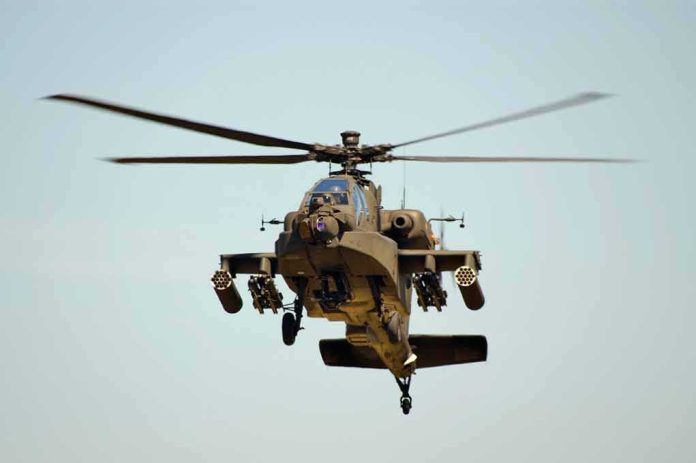
Unveiling the U-Hawk, an autonomous utility drone, could redefine military aviation and operational strategy for the U.S. Armed Forces.
Story Highlights
- Sikorsky introduces the U-Hawk, a fully autonomous version of the Black Hawk.
- This transformation could revolutionize logistical and combat support.
- First flight is anticipated for 2026, marking a swift development phase.
- The project aligns with broader military trends towards autonomy.
Autonomous Transformation of the Black Hawk
Sikorsky, a subsidiary of Lockheed Martin, has taken a bold step forward by converting the UH-60L Black Hawk into an autonomous utility drone, dubbed the U-Hawk. The transformation includes the removal of the cockpit and its replacement with cargo doors, enabling the aircraft to operate without a human crew. This innovation is set to enhance the military’s logistical capabilities, supporting missions with improved efficiency and reduced human risk.
The project, funded by DARPA, reflects a strategic shift towards integrating autonomous systems into military operations. The concept was swiftly developed in just 10 months, with the first flight scheduled for 2026. This development is a testament to the ongoing collaboration between Sikorsky and DARPA, which has been exploring autonomous technologies for various military applications for years.
Implications for Military Operations
The introduction of the U-Hawk is expected to have significant short-term and long-term implications for military operations. In the short term, the U-Hawk will enhance logistical support, potentially increasing safety by removing personnel from dangerous environments. In the long term, it signifies a shift in military strategy towards more autonomous systems, which could alter the landscape of defense operations and create economic opportunities within the defense industry.
Defense experts view this development as a major step forward, offering enhanced capabilities and reduced risks. The integration of autonomous technology into existing platforms like the Black Hawk is seen as a cost-effective solution, aligning with the broader military goal of leveraging technology to maintain strategic advantages.
Expert Perspectives on Autonomous Systems
Industry experts highlight the transformational potential of the U-Hawk in military logistics and combat strategies. While some caution against the ethical implications of autonomous military systems, the consensus emphasizes their potential to save lives and increase operational efficiency. As these technologies become more prevalent, they will likely shape the future of military operations and influence geopolitical dynamics.
This development also raises questions about the future role of human operators in military aviation. While the U-Hawk offers unprecedented autonomy, the need for oversight and strategic control remains essential. As the U-Hawk prepares for its first flight, the defense community eagerly anticipates the impact it will have on the U.S. Armed Forces and global military strategies.
Sources:
Sikorsky’s Black Hawk Reborn as U-Hawk Drone
Black Hawk Cargo Drone Unveiled
Sikorsky Converts Black Hawk Into U-Hawk
Black Hawk Autonomous Drone Insights







